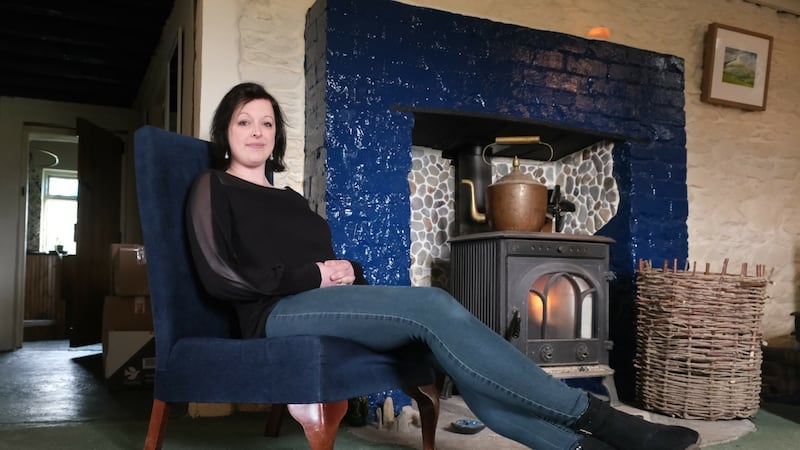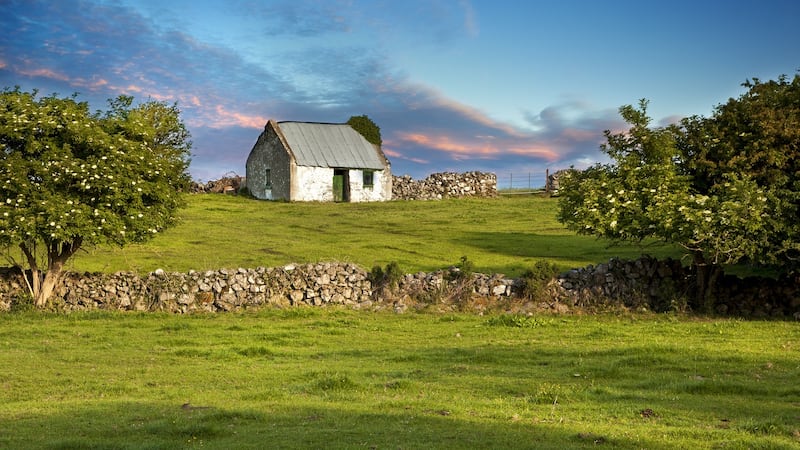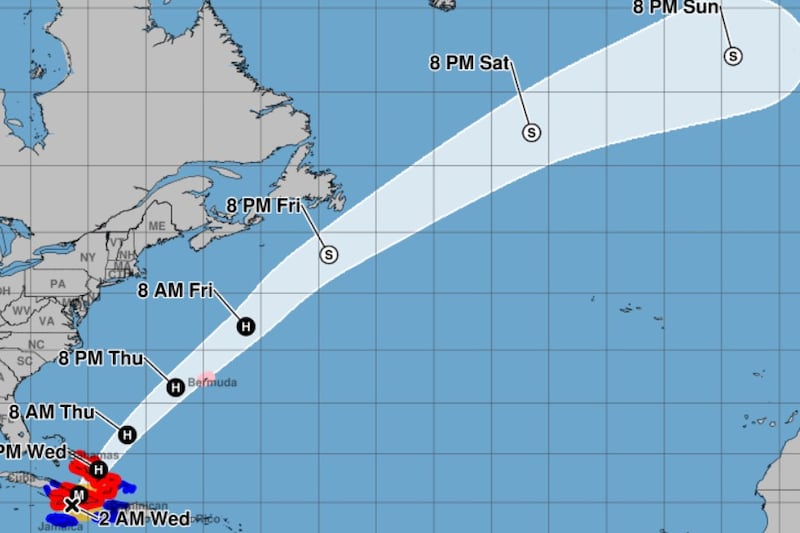Could decamping to the countryside really be the way to live the dream for those wanting to get on the property ladder? Yes, says 30-something DIYer Abi Dillon, but you have to be willing to get your hands really, really dirty.
Cheap Irish Homes, the TV spin-off of the popular Cheap Irish House Instagram feed by Maggie Molloy, has been a runaway ratings success for RTÉ. It shows affordable farmhouses in the countryside with price tags that would buy you a parking space in Dublin.
It’s a beautifully simple premise: get people onto the property ladder no matter where that ladder is and do up the house as you go along. If you’re solo or a couple with no kids, there isn’t anything stopping you from taking on such a project, and the recent lockdown has shown that many of us can work remotely.
Presenter Molloy practises what she preaches, having bought a home in Co Tipperary in 2004 and spending the past 16 years making it habitable. But the show is light on the sort of hard work and money required to take on one of her remodelling jobs.
The costs of installing services such as electricity, water and a septic tank, which may need planning and is not always as straightforward in the country as service access is in our cities, are glossed over. But that has not deterred viewers calling estate agents in their droves to try to bag one of the bargains featured.
One of the most popular properties of the series, according to producer Michael Lynch, was a two-bedroom detached cottage in the village of Ballydaly, a few miles west of Millstreet in northeast Cork. Selling agent Catherine Pomeroy of Dick Pomeroy & Co fielded “loads of calls” on the 65sq m/700sq ft, two-up two-down house. The reason for its popularity was its asking price of €40,000.

As the show was filming the house, Abi Dillon (35), a savvy singleton and real-life cheap homes advocate who isn’t afraid of getting her hands dirty or roughing it, was already closing the sale.
Dillon is not alone in her search for better value. Between March and June, property portal MyHome.ie found that searches for cottages were up 45 per cent compared with the same period in 2019; country houses were up 50 per cent and farmhouses were up 70 per cent.
Commuter counties were popular, with searches for Co Wexford up 90 per cent. Searches for Co Wicklow were up 70 per cent, but the western seaboard is getting the most eyeballs. Galway was up 102 per cent year-on-year, while Limerick was up 78 per cent and Cork up 50 per cent.
Pricing is driving this, explains MyHome MD Angela Keegan. Searches for homes under €100,000 was up seven-fold, while searches under €200,000 were up four-fold. Searches for properties costing €300,000 or less were up three-fold.
Dillon has form, having bought her first home, a mobile home in Ventry, Co Kerry, for €800 at the age of 21. From there she traded up to a cottage in Kilfountain, Co Kerry, about two miles outside Dingle on the road towards Ballyferriter, in 2015, renovating it before selling it earlier this year for 46 per cent more than she paid.
She bought Mermaid Cottage, on the outskirts of Dingle, for €70,000, using money gifted to her by her mother. She had been coming to Dingle since she was 19, and had developed a special rapport with the town and its most famous inhabitant, dolphin Fungi, swimming with it daily and accompanying tourists on the boats out to see the dolphin.
'That first year, I couldn't live in it. I was managing using an outside tap for water, filling the kettle by hand to wash'
She has also set up a studio-cum-gallery in the town called Sea Glass, selling beachcombed art by her and other local talents. She completely refurbished the empty store, building counters and shelving, which gave her some experience of what was in store at Mermaid Cottage.
“I was open to doing a project, to buying a place that needed work,” she says. When she bought the house, which was about 74sq m/800sq feet in size, it was uninhabitable. The roof was about to fall in. “It really was derelict,” she recalls. So she improvised. “I bought a Renault Masto van, turned it to a camper and slept in it for the first eight or nine months.”
During this time she cleared out the place, all on her own, including removing all the electrical cabling. She showered in friends’ homes, as the camper didn’t have a washroom or toilet. The toilet was portaloo, installed on the one-acre site. “That first year, I couldn’t live in it. I was managing using an outside tap for water, filling the kettle by hand to wash.”
The roof needed complete replacing, a job she had done professionally at an outlay of about €8,000. She got some help from local builders to take down the ceiling boards. With a new roof on she moved in, sleeping on an air bed. “It was a step up from camping.”
She installed an electrical shower, operated from an electric point in the porch, and a compost toilet. In the kitchen she put a gas cooker and built a breakfast bar using the branch of a chopped tree to prop it up. The main wall here she papered in a woodland photomural, and the Belfast-style sink adds to the rustic mood.
She built an open-tread stairs that leads from the living room to the rooms under the eaves herself, searching Google for how-to videos on what to do. Using 9x2 wood lengths cut using a jig-saw, she screwed the treads to the lengths using an electric screwdriver. She then stained it and fixed it to the wall. “It’s really a glorified ladder,” she says.
'It was the first time I'd been in a position to get on the property ladder... I didn't have the money to do the electrics, the plumbing or heating'
The internal walls have all been exposed to show off the stonework. This she did with the help of a kango hammer to pick off all the plaster. She repointed the walls and washed them in a soft white that shows their texture but keeps dust to a minimum.
Next, she replaced a rusty old range in the living room with a wood-burning stove, lining the interior of the inglenook fireplace with pebbles found on the peninsula’s beaches and affixing them with tile adhesive and grout.
The kitchen is off the living room, accessed via a small hall where the concrete floors have been painted a forest green. The ceiling beams were still exposed, evidencing the fact that the house was a work in progress when she sold it.
More branches from an evergreen were used as balusters for the landing balustrade. The crossbeams are original and were in good condition.
The existing floors were painted white, and then much of the paint was sanded off to give a distressed look.
While professional roofers did the felt, battens and slates, Dillon did all the inside insulation and installed the tongue-and-groove panelling standing on a ladder. “I’ve no idea how I didn’t fall off.”
It was dirty and hard physical graft. She slept there on her own, but in the company of her two dogs, Shep and Shadow, which gave her a sense of security.
Ignorance is bliss, she says of the Mermaid Cottage refurbishment.
“I was used to doing DIY. I had taken on a craft shop-cum-studio space, now closed, and had to refurbish it. I knew it was a huge project, but it was the first time I’d been in a position to get on the property ladder and it was still an opportunity even if it took years of struggle. I didn’t have the money to do the electrics, the plumbing or heating.”

But what it lacked in terms of utilities and wall and floor insulation, the property more than made up for it in charm.
And that charm elicited lots of interest, says local agent Michael Kennedy, who sold Dillon’s Dingle home last January for about €130,000, almost doubling her initial money. He reckons the new buyers got a bargain, despite the fact that the
While slightly smaller in terms of style, her new project, the Ballydaly house in Co Cork, is a carbon copy of the Dingle property. She says the televison show did not mention that the oil central heating system has to be taken out and upgraded, or that the ESB had been disconnected. Nor did it mention that the property needs a new septic tank.
This time, Dillon has a different set of priorities. She is putting money into the essentials first – electrics, heating and plumbing – before figuring out the interior.
The aesthetic is also going to be different. She says Mermaid Cottage was influenced by her life, business and the sea. Its coastal decor worked to perfection its Dingle location, but the rolling hills of north Co Cork provide a more agricultural setting, so she is going with a modern look that will involve cladding internal walls in wood and installing black-edged windows. She is hoping to roof the outhouses in grass or turf or a sedum.
While waiting for workmen and window firms to come to quote for jobs, she has started clearing out. She tries to recycle much of the contents of the house.
“The locals have been so welcoming,” she says of her move to Co Cork. One left a potted geranium as a gift on her doorstep.
She is looking forward to getting stuck in. “It is the most satisfying kind of work. I’ve always had a love of DIY, having worked on projects with my dad as a teenager, am creative and arty, and can see the vision.”


















